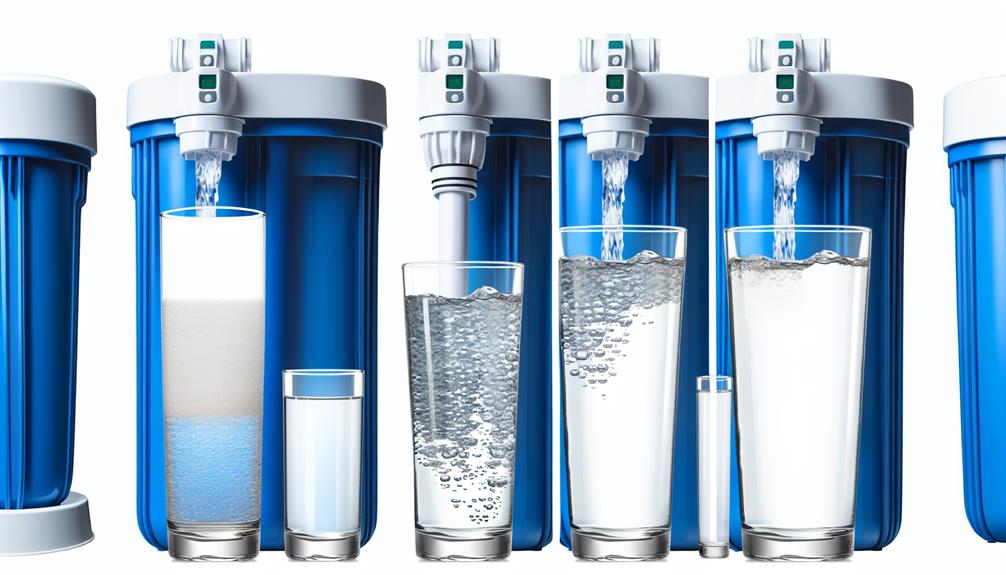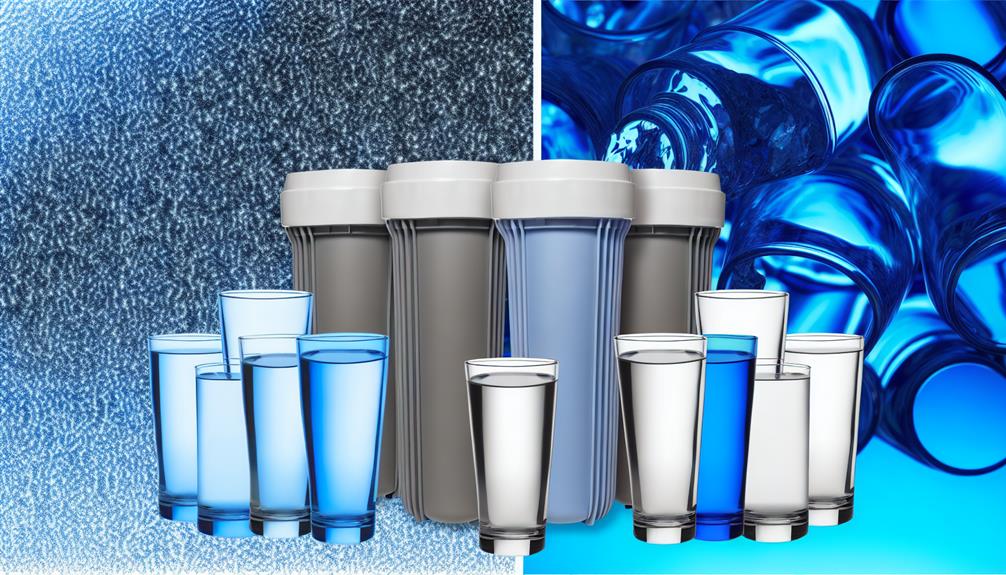As you saddle your horse for an adventure into the unknown, you wouldn't forget your compass or map, yet many explorers overlook the quintessential gear of modern survival—a reliable travel water purifier.
You're venturing into a world where the water you encounter may not be as pristine as the streams of yesteryear, and staying hydrated without succumbing to illness is a non-negotiable aspect of your journey.
With a myriad of purifying options at your fingertips, from UV light purifiers that zap away microorganisms to straw filters that promise immediate drinkability, it's imperative you understand the mechanics and efficacy behind each choice.
You'll want to know not only which device best suits your needs but also the scientific subtleties that differentiate a mere gadget from a lifesaver.
So let's unfold the map of portable water purification together, and you'll discover the crucial details that could define your next venture into the wild.
Understanding Portable Water Purifiers
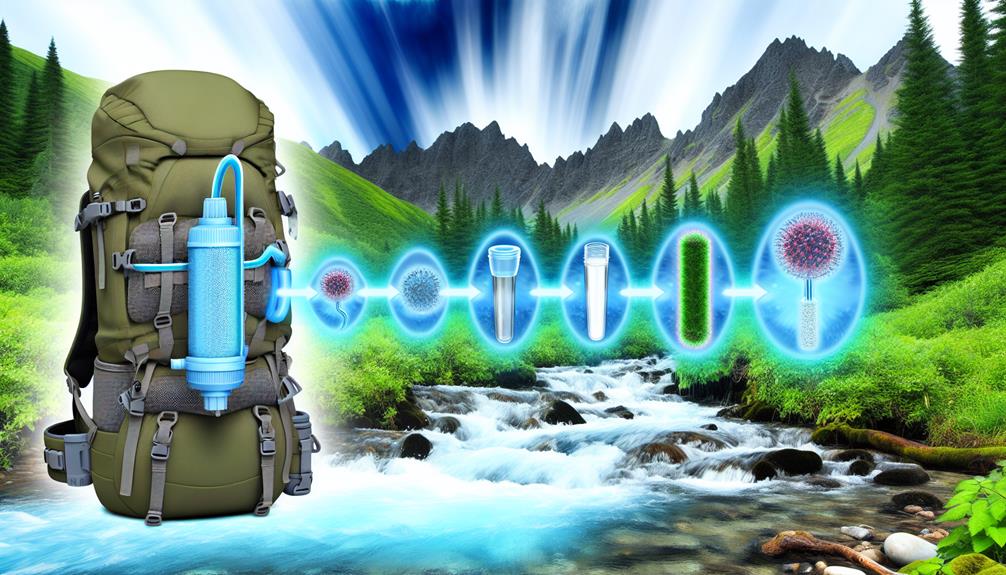
When selecting a portable water purifier, it's crucial to understand the various technologies and features that determine its effectiveness and suitability for your specific needs. You'll want to analyze the filter lifespan closely, as it indicates how often you'll need to replace the core component of the purifier. A longer filter lifespan not only ensures sustained performance but also affects the long-term cost and convenience of the device.
Moreover, the efficacy of a portable water purifier is profoundly influenced by the range of contaminant types it can remove or neutralize. Some purifiers are equipped to filter out particulates like sediment and microorganisms, including bacteria and protozoa. Others may also tackle viruses, which are particularly challenging due to their tiny size.
Advanced models might incorporate activated carbon to reduce chemicals and improve taste, or even employ ultraviolet (UV) light to kill pathogens without the need for chemical treatments. It's imperative to match the purifier's capabilities with the contaminants you're most likely to encounter.
Assessing these two critical aspects—filter lifespan and contaminant types—will guide you in making a well-informed decision, ensuring you have access to safe drinking water wherever your travels take you.
UV Light Purification Explained
Harnessing the power of ultraviolet (UV) light, UV light purification systems offer a chemical-free method to eradicate harmful pathogens in water, ensuring its safety for consumption. These systems use a specific wavelength of light to disrupt the DNA of microorganisms, rendering them unable to reproduce and effectively killing them. This process is known as sterilization, and it's critical to understand its efficiency and the maintenance requirements to keep the system operating effectively.
- Sterilization efficiency: UV purification is highly effective against bacteria, viruses, and protozoa, with a kill rate of up to 99.99% for many organisms.
- Maintenance requirements: To maintain optimal performance, the UV lamp needs regular replacement, typically once a year, and the quartz sleeve surrounding the lamp should be kept clean.
- Power source: UV systems require a power source, which can be a consideration for travel scenarios where electricity may not be readily available.
When analyzing UV light purification, it's essential to consider both the effectiveness of the sterilization and the practical aspects of maintaining the system. Regular maintenance ensures the continuation of high sterilization efficiency and the provision of safe drinking water wherever your travels may take you.
Chemical Disinfectants for Travelers
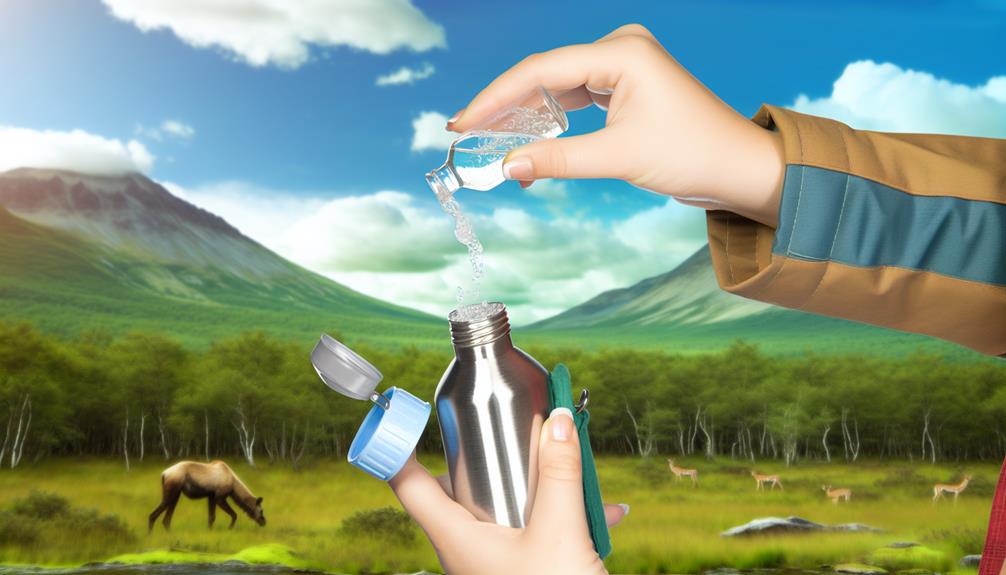
Frequently, travelers turn to chemical disinfectants as a portable and effective solution for purifying drinking water in areas where access to clean water is uncertain. Among these, chlorine-based treatments are prominent due to their proven efficacy in eliminating pathogens. As you ponder the use of chlorine, you must weigh its ability to effectively neutralize bacteria, viruses, and protozoa against its potential impact on taste.
Chlorine's efficacy isn't instantaneous; it requires sufficient contact time with the water to be effective. The exact duration is contingent on the concentration of chlorine and the water's temperature and pH level. Typically, waiting 30 minutes after treatment ensures that the chlorine has performed its disinfecting function. However, colder or murkier water can necessitate a longer period or a higher dose.
The taste impact is a common concern among users of chlorine disinfectants. Some individuals are sensitive to the residual flavor chlorine imparts to the water. To address this, neutralizing agents or flavor masks can be employed post-treatment, although this may add an extra step to the process.
In your quest for safe drinking water while traveling, consider the balance between the high effectiveness of chemical disinfectants and their sensory implications. Your decision should hinge on prioritizing safety while managing personal taste preferences.
Pump and Gravity Filters Overview
While chemical disinfectants like chlorine are a common choice for travelers, pump and gravity filters offer an alternative method of water purification that removes particulates and pathogens without altering taste. These systems have become increasingly popular due to their effectiveness and convenience.
Pump filters work by manually driving water through a filter, trapping contaminants. They're versatile, suitable for various water sources, and many models boast impressive filter longevity. However, they require physical effort and regular maintenance to perform optimally.
Gravity filters, on the other hand, rely on the natural force of gravity to pass water through the filter. They're typically easier to use—just fill and hang the reservoir—and are ideal for group travel due to their higher capacity and minimal labor.
To better gauge their applicability for your next adventure, consider the following:
- Filter Longevity: How often will you need to replace the filter element?
- Maintenance Ease: Can the filter be cleaned or backflushed easily in the field?
- Output Speed: How quickly do you need filtered water?
Pump and gravity filters, with their distinct mechanisms, offer a balance of reliability, ease of use, and maintenance. Analyzing these aspects will help ensure you choose a water purification method that aligns with your travel needs.
Straw Filters and Their Use
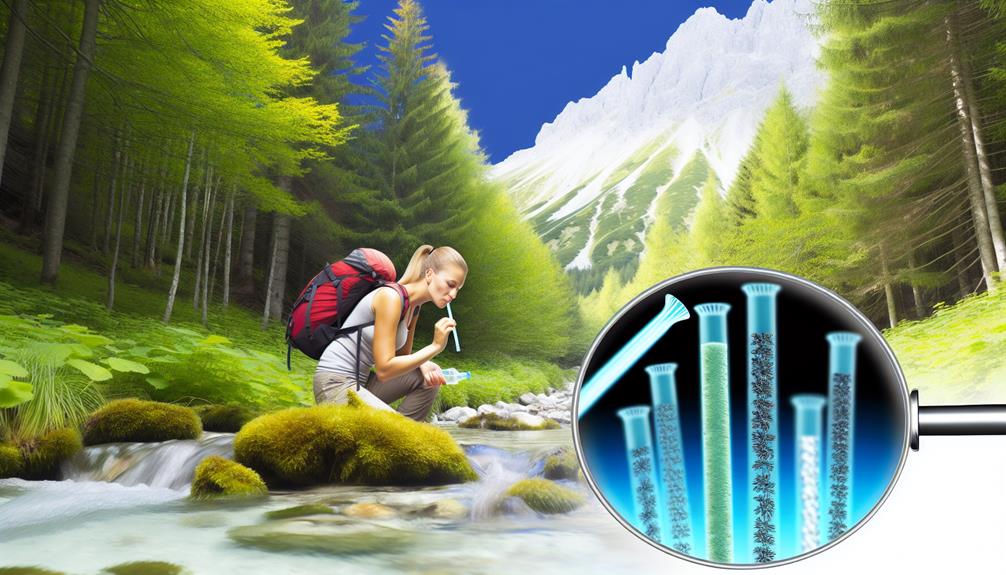
Moving from the larger, more stationary methods, straw filters offer a lightweight and highly portable option for individual travelers seeking immediate access to safe drinking water. These compact devices are engineered for convenience, allowing you to drink directly from water sources such as rivers or streams.
Analyzing the mechanics, straw filters typically utilize a combination of mechanical filtration and chemical treatments to eliminate pathogens and contaminants. The mechanical aspect often involves a hollow fiber membrane or activated carbon, capable of filtering out bacteria, protozoa, and sometimes even viruses. The chemical treatment, if included, might use iodine or chlorine-based solutions to purify the water further.
The filter lifespan of these devices is critical; most straw filters can purify hundreds to thousands of liters before requiring replacement. It's crucial to track the volume processed to ensure your filter remains effective throughout your journey. Manufacturers generally provide guidelines on lifespan, but it's also dependent on the turbidity and contamination levels of the water you're filtering.
As for the taste impact, while straw filters are adept at removing harmful substances, some may alter the taste of the water. Activated carbon is effective in reducing bad tastes and odors, but your water's flavor may vary depending on the source and the specific filter used. Always consider both the filter lifespan and potential taste impact when selecting a straw filter for your travels.
Conclusion
You've now unraveled the mysteries behind the leading travel water purifiers. From UV light purifiers zapping contaminants to chemical disinfectants neutralizing threats, you understand each method's intricacies.
Pump and gravity filters have been demystified, and straw filters' practicality for on-the-go hydration is crystal clear.
Armed with this knowledge, you can confidently choose the right purifier, ensuring safe drinking water on your adventures while minimizing your environmental footprint.
Stay hydrated, stay safe, and explore with certainty.
